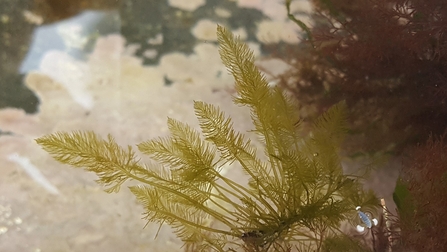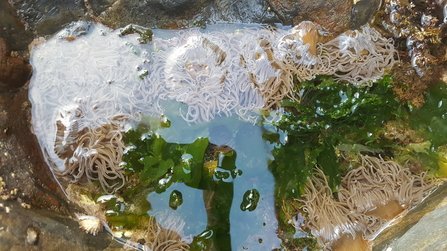In September the shores visited were, Rhoscolyn (Glannau Rhoscolyn SSSI), Porth Meudwy (Glannau Aberdaron SSSI and Pen Llŷn A’r Sarnau SAC), Penrhyn Bay (Liverpool Bay SPA) and Porth Cwyfan (Anglesey Terns SPA). We also went to Cricieth for our first brief have-a-go session and discovered two families keen to get involved with two young people showing promise with ID skills and understanding.
We carried out Walkover Surveys and Timed Species Searches this series of surveys. The Timed Species Searches are focussed pockets of time spent searching for between 1 and 4 species, chosen for their importance. Our searches, so far, have been focussed on Invasive Non-Native Species and up to now, none of them have uncovered an INNS, although INNS have been seen elsewhere on shore.
Number of volunteers overall – 16
Walkover Survey area sampled – 164m2 (6 transects in the midshore area of varying length).
Timed species searches – looking for Wireweed 60mins; Slipper limpet 150mins; Pacific Oyster 20mins.










